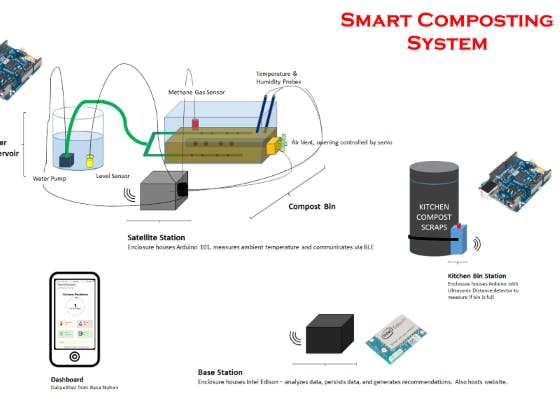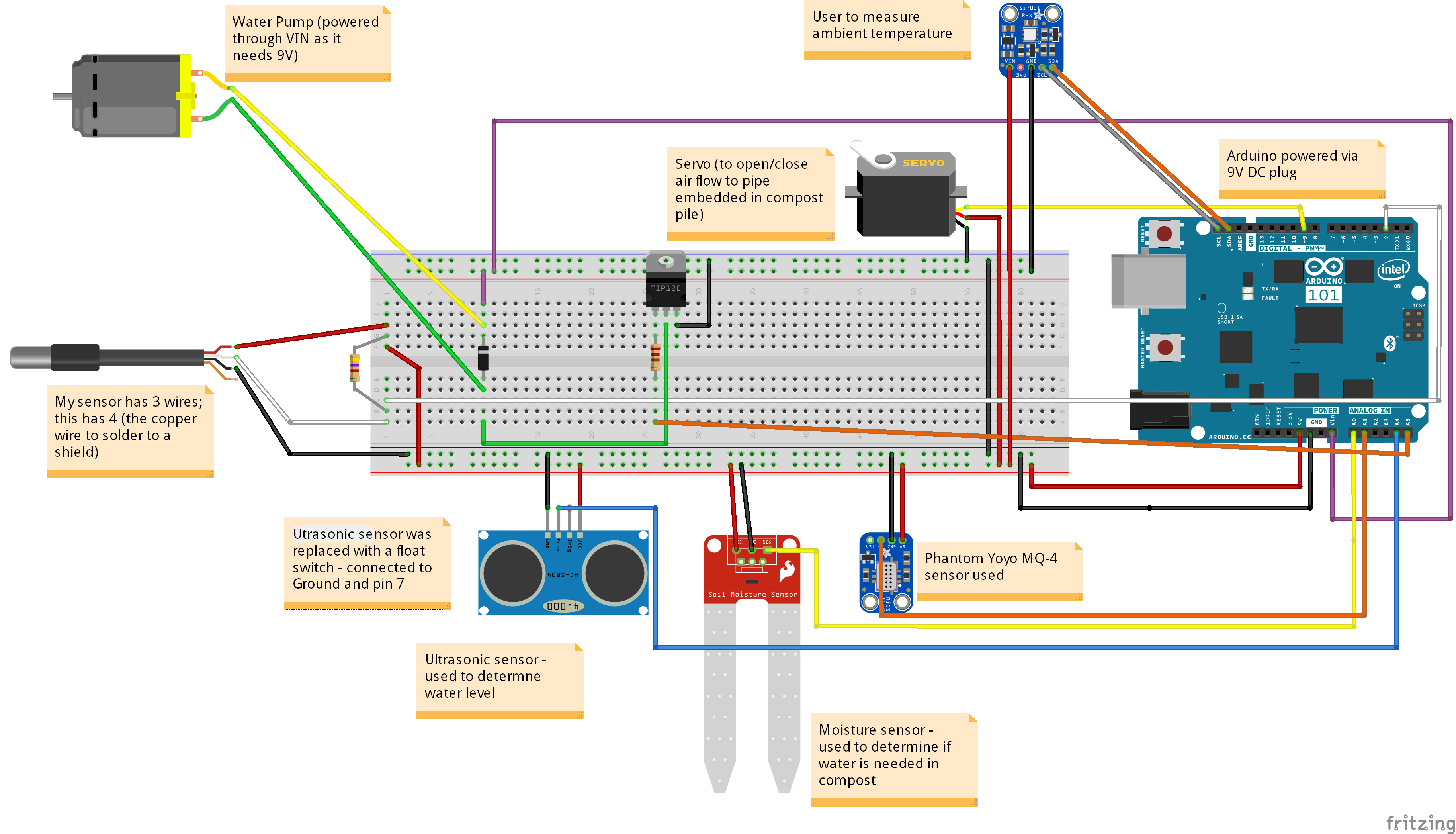The most recent version of this project can be found here.
Executive SummaryThe smart composting system monitors and manages your compost - adding air and water when needed. It tracks when your compost is ready and alerts you when a specific action needs to be taken (e.g. - stir the compost, cover the compost).
This is the second prototype of the solution. Version 1 was tested inside (you can see the entire Version 1 video here). Version 2 was tested in my compost bin. The video above highlights V1 and V2. The images and data below are from Version 2 (test in compost).
Problem StatementPer the EPA, food scraps & yard waste currently make up 20-30% of what we throw away, and should be composted instead. Making compost keeps these materials out of landfills, where they release methane, a potent greenhouse gas.
Atmospheric levels of methane are spiking. This is cause for alarm among global warming scientists because methane emissions warm the planet by more than twenty times similar volumes of carbon dioxide.
Unfortunately, most do not compost - typically due to ignorance on the benefits of composting, misunderstanding of what can be added to compost, and lack of desire to manage compost.
The Good News
Luckily, it's simple to compost. If all you did was dump kitchen scraps and leaves into a pile, then you're guaranteed to get compost. The problem is that:
- this process, called anaerobic composting, can take years
- Anaerobic composting causes a higher output of methane gas, attracts rodents, and emits hydrogen sulfide (smells like rotten eggs) and cadaverine (smells like a dead body).
More details: http://compostrevolution.com.au/australia-wide/tutorial/composting/5/
A Better Way to Compost
Most composting advocates suggest aerobic composting. This method uses oxygen to feed the microorganisms that break down the compost. There are a number of benefits to this methods:
- Usable compost can be created in as little as 4 weeks, if temperature, moisture, and air flow are properly maintained
- Methane gas is not created
The challenge with this approach is the care needed to maintain the composting environment. This involves aerating the compost, adding materials to maintain heat/pH, and watering the compost as needed. This is where the Smart Compost System can help
High Level SchematicThe Smart Compost System is made up of four components:
- Satellite Station - measures details about the composts and takes action
- Kitchen Bin Station - measures amount of waste in the scrap bin
- Base Station - analyzes the sensor data and provides recommendations
- Dashboard - Provide UI for users to understand health of system and actions needed
An Arduino 101 powered device that is connected to the compost pile and measures:
- Ambient temperature
- Compost temperature
- Compost moisture
- Methane gas output
- Water reservoir level
Based on the sensors, the sensor station can:
- Add water (from a reservoir of collected rain water)
- Open/close air vents
Communication to the Base Station is via Bluetooth Low Energy (BLE).
Solution Build - Kitchen Bin StationAn Arduino 101 device that persists that measures the amount of kitchen scraps added to the compost bin. This is used to notify the user when the kitchen scraps bin needs to be emptied. This measurement is also used to calculate lifetime pounds of kitchen material composted.
Communication to the Base Station is via BLE. Measuremmenst are taken with an ultrasonic range finder.
Solution Build -Base StationAn Intel Edison device that persists the data, performs analysis of the sensor data to make recommendations, and hosts the website. The base device obtains sensor data via BLE (via polling for the Satellite station and via notifications from the Kitchen Bin System).
Solution Build -DashboardA web based dashboard that provides guidance on actions needed and a view on overall health of the compost. The user is able to see:
- Time until compost is ready
- Sensor readings (temperature, moisture, methane, kitchen bin status, total pounds composted)
- Actions needed (stir compost, add water, etc)





_baVEVgguW1.jpg?auto=compress%2Cformat&w=48&h=48&fit=fill&bg=ffffff)
















Comments